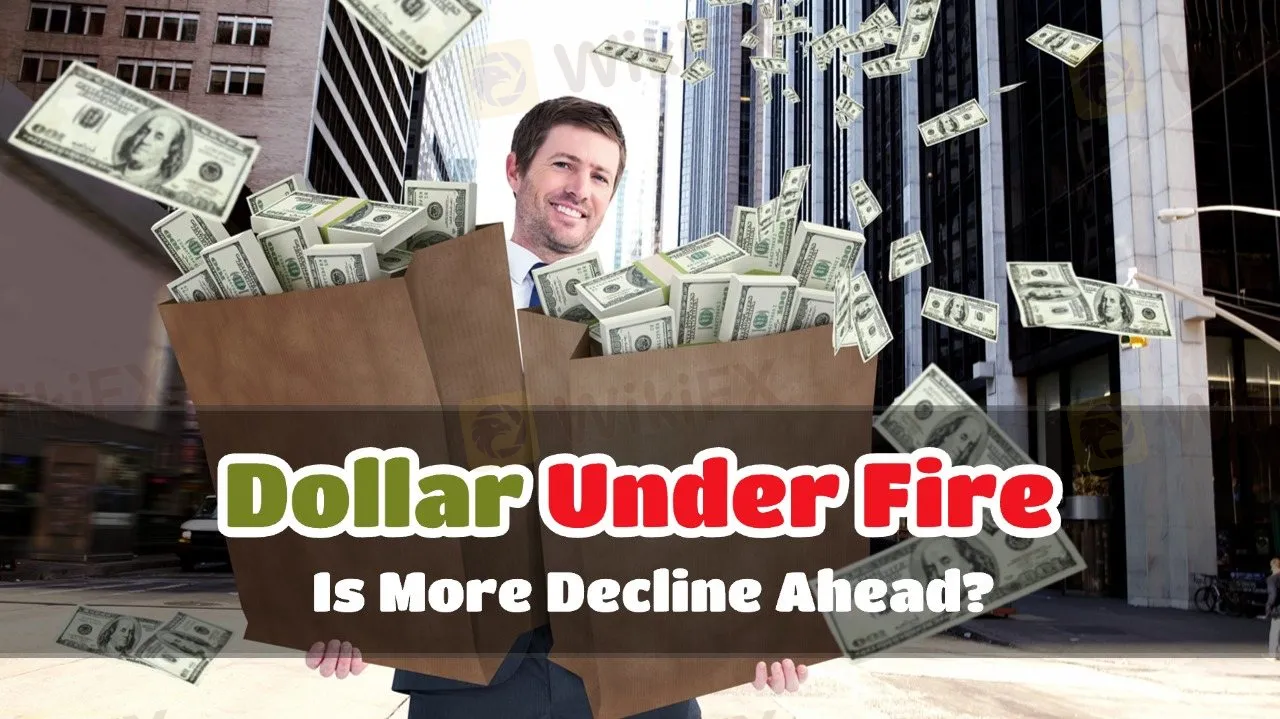简体中文
繁體中文
English
Pусский
日本語
ภาษาไทย
Tiếng Việt
Bahasa Indonesia
Español
हिन्दी
Filippiiniläinen
Français
Deutsch
Português
Türkçe
한국어
العربية
Dollar Under Fire—Is More Decline Ahead?
Abstract:The dollar faces its biggest decline of the year, strong-dollar logic challenged.

Last week, the U.S. dollar experienced its steepest decline of the year, dropping more than 3% in a single week.
The European Union and Germany broke fiscal constraints to increase defense spending, pushing the euro and European bond yields sharply higher. Non-U.S. currencies strengthened across the board, with the Swedish krona, euro, and Norwegian krone posting significant gains.
In contrast, the Canadian and Australian dollars saw limited gains due to shifting market risk sentiment. The dollars continued breakdown suggests a potential long-term trend reversal may be underway.
The fundamental logic behind the strong dollar is facing mounting pressure. The Trump administration's tax cuts have been progressing slowly, while fiscal tightening is becoming more evident. Additionally, tariffs have been used more as a negotiation tool rather than as a means to truly restrict trade, failing to provide meaningful support for the dollar.
Furthermore, Europe‘s increased fiscal spending could prompt other economies to follow suit, narrowing interest rate differentials between the U.S. and other countries, further weakening the dollar’s advantage.
Future Challenges for the Dollar
If the U.S. continues its path of fiscal tightening while its trade partners adopt more aggressive fiscal stimulus policies, the dollar's attractiveness may decline further. In addition, uncertainties in the global economic environment, fluctuations in U.S. Treasury yields, and geopolitical factors could all play a crucial role in shaping the dollars future trajectory.
Given the potential weakness of the dollar, investors should closely monitor global economic policy shifts, particularly major economies fiscal policy changes.
A well-diversified portfolio, with exposure to non-U.S. currencies and safe-haven assets, could help mitigate risks and navigate potential market volatility.
Disclaimer:
The views in this article only represent the author's personal views, and do not constitute investment advice on this platform. This platform does not guarantee the accuracy, completeness and timeliness of the information in the article, and will not be liable for any loss caused by the use of or reliance on the information in the article.
Read more

Fed Holds Rates Steady! Yen Faces Growing Uncertainty
The Fed stays put but strikes a hawkish tone. The yen remains under pressure as market uncertainty deepens.

Is Your Money Safe with Libra Markets? Check Out Fast!
n this exposure episode, we will take you through the heinous game played by Libra Markets, an unregulated forex broker. Take a look at how people are facing issues regarding withdrawals.

TradeHall vs. HYCM: Which Broker Should You Choose?
When choosing a broker, understanding the difference between superficial features and real regulatory protection is essential. In this article, WikiFX will compare TradeHall and HYCM. While on the surface, both brokers offer a wide range of trading instruments, the real difference lies in their regulatory statuses, which is a commonly overlooked factor for traders when they opt for brokers.

Trade Nation vs. FBS: Which Broker Is Better for New Traders?
If you're new to trading, choosing the right broker can feel overwhelming. Two popular choices, Trade Nation and FBS, offer very different experiences. This comparison breaks down which is better suited for beginners, based on ease of use, safety, costs, and support.
WikiFX Broker
Latest News
Danske Bank expects the European Central Bank to make its final interest rate cut in September.
Retirement Dreams Shattered: Don't Do This To Yourself!
EU Regulators Imposed Over €71M in Sanctions in 2024, ESMA Calls for Enforcement Convergence
No Regulation, Revoked Licence: Is Tradehall Safe to Use?
Philippines Sets Southeast Asia’s First Crypto Regulatory Framework
Tether Freezes $12.3 Million in USDT Over Money Laundering Concerns
MiCA Unlocks EU Crypto Market, but National Tensions Rise as Gemini and Coinbase Near Approval
FortuixAgent Review 2025: Is it Scam or Legit?
MetaTrader Support Ending July 2025: Update Now or Risk Losing Access
HYCM Broker Review 2025: A Comprehensive Overview
Currency Calculator


